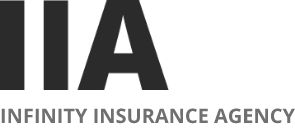We are never really ready for a collision but must always be informed how to respond and to act coherently. The incident becomes more stressful in cases of hit-and-run. A hit-and-run takes place when a driver's car impacts a pedestrian or another vehicle and the driver leaves the scene without providing identification or offering assistance. It does not matter whether the driver is at fault or not. Some states also define as a hit-and-run when a car hits another in a parking lot and the driver fails to leave a note with contact information on the other vehicle's windshield.
When you are involved in a collision, try to keep calm and in control; if possible, pull to the shoulder of the road and call the police. If the other driver flees the scene, assess the situation and take care of the basics.
WHAT TO DO:
According to the National Association of Insurance Commissioners, here are some steps to follow if you are in a collision:
• Remain calm.
• Telephone the proper authorities and inform them of any injuries. Regardless of the circumstances, report the accident to the police.
• Check for any injuries and administer first aid if necessary.
• Record the name, address and phone number of the other driver. Always write down the make and license number of any vehicles that are involved.
• Collect the names, addresses and phone numbers of all passengers and witnesses.
• Take photos of the accident scene if possible.
• Do not admit fault.
• Ask the investigating officer how to obtain a copy of the police report.
• Notify your agent or insurance company immediately.
Some people flee the scene because they are not properly licensed or insured. An active, valid driver’s license is required to drive a vehicle; having the right insurance coverage safeguards you while driving
INSURANCE COVERAGE CLASSIFICATION
Motorist insurance policies contain three principal elements: liability insurance for bodily injury, liability insurance for property damage, and uninsured/underinsured motorist.
Let’s break it down into their basic coverage areas:
• Liability coverage – covers liability and expenses when you are at fault
• Bodily injury liability – covers medical expenses of injured parties when you are at fault
• Property damage liability – pays for damages to the other vehicle and the property of others when you are at fault
• Personal insurance protection (PIP) – covers medical expenses for you and your passengers after an accident
• Uninsured/Underinsured Motorist Coverage – covers your costs if the party who hit you doesn’t have insurance or the coverage they do have is not sufficient
• Collision – covers repairs to your car; if don’t own your car, it is a requisite
• Comprehensive – covers damages or theft of your vehicle outside of a collision
You can also purchase insurance to protect your car. Coverage is determined by your state requirements and what your insurer offers. Some states have no-fault laws, which is to say that instead of bringing a lawsuit, each party seeks recovery directly from his/her insurance. The following coverage is geared to drivers in those states:
• 50/100/50 – recommended for older vehicles and few assets; also, students and some retirees may opt for this level
• 100/300/100 – suggested for middle-income earners with savings and other assets
• 250/500/100 – recommended for those in the higher financial tiers
EACH CASE IS UNIQUE
Keep in mind that each driver’s needs are unique and best served by consultation with a trusted agent. Always have the necessary coverage to protect yourself and your loved ones: ask about the right coverage for you and your family within your state’s requirements. Keep safe and know what to do if an accident happens.
For excellent car insurance rates, call one of our licensed agents today at 1-800-INFINITY or visit our Auto Insurance Page for a free quote!
